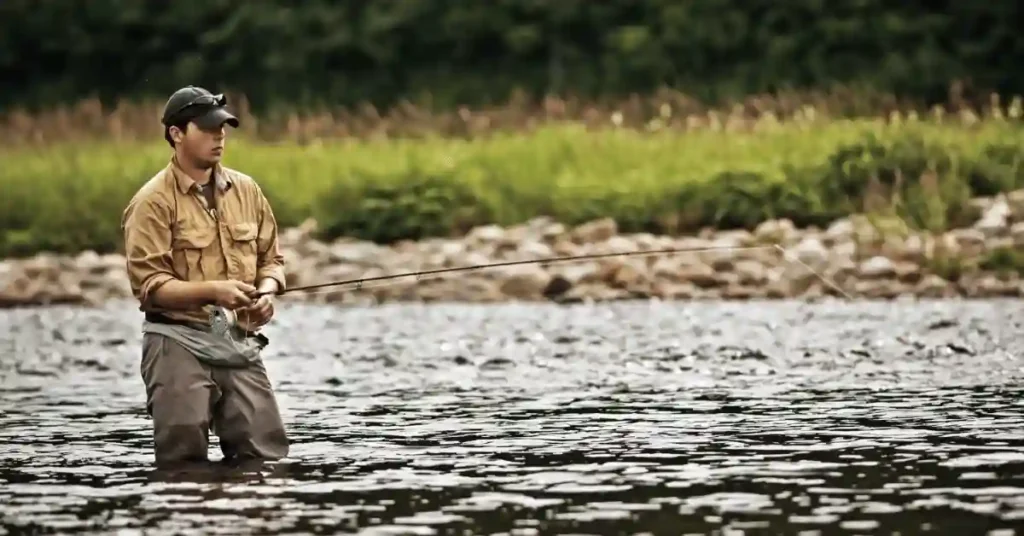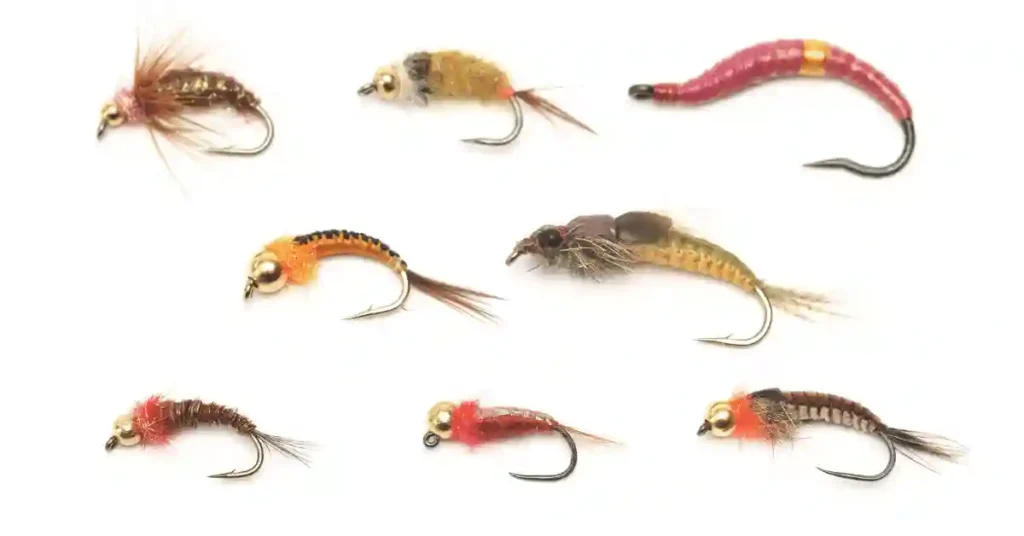Getting Started With Fly Fishing In 2024
Fly fishing is like a particular version of fishing. It’s different from the usual kind, just as road cycling is a unique way of biking, stick-shifting is a fantastic way of driving, and using a straight razor is a special way of shaving. It’s not easy, but it’s super rewarding.
People have been doing fly fishing for a long, long time. It started in Britain long ago and came to the U.S. in the 19th century. Now, almost seven million Americans do it all across the country, from Washington State to Maine to the Gulf of Mexico.
You get many different answers when you ask people why they like fly fishing. It’s like doing yoga for some because casting the fishing rod feels so smooth. For others, it’s like doing surgery because it’s a precise way to catch some of the most beautiful and exotic fish. Fly fishing is a living sport, and although it started long ago, people are always coming up with new ways to do it. If you want to try it, the following are the things you need to know to get started!
Fly Fishing Spots: Where and When to Reel Them In
Fly fishing isn’t just about British chalk streams or Western drift boats; it’s versatile and can be done in various waters. Whether striped bass, carp, pike, or salmon, fly fishing suits many fish species. Trout, often the target, thrives in rivers, and timing matters.

People have been doing fly fishing for a long, long time. It started in Britain long ago and came to the U.S. in the 19th century. Now, almost seven million. For trout, the sweet spot is when water temperatures range from the mid-40s to mid-60s Fahrenheit. Late spring to mid-autumn is prime time in most U.S. states. Summer brings opportunities in tailwaters (rivers below dams) with cold releases, like the White River in Arkansas or the Bighorn in Montana. Stillwater fishing in lakes adds diversity, offering bass, pike encounters, and trout. Americans do it all across the country, from Washington State to Maine to the Gulf of Mexico.
Saltwater fly fishing presents challenges but exciting battles. It’s ideal for warmth when rivers freeze, featuring tarpon, permit, and bonefish—reports from outfitters, companies like Orvis, and apps like River App help track conditions. Monitoring factors like spawning, hatches, or migrations is vital. Connecting with local fly shops or guides ensures the best chances for success on the water. You can do fly fishing in ponds too.
Essential Gears Required
It would help to have some things and equipment to start fly fishing. The following are the basics:
- Fly Rod
- Reel
- Line with backing
- Leader
- Tippet
- Flies
- Cooler
- Other Gear/Tackle
Fly Rod
When it comes to fly fishing, there are many different fly rods. They arrive in various lengths and weights, which need to be clarified and confusing. Before you buy a rod, it’s a good idea to do some research. The importance of a fly rod doesn’t refer to how heavy it is but rather to the significance of the fishing line it’s designed to use. Tackle companies employ the “Weight #” system to distinguish between rods and tubes.
For general trout fishing, a 5-weight fly rod is popular and a good choice if you only want one rod. However, as you get into fly fishing, you might end up with more than one rod. If you need help deciding which rod to choose, your local shop can help you find the right one by asking some questions. Trust your instincts; don’t feel pressured to make a quick decision.
Here are some general guidelines for choosing a fly rod:
- For small streams and smaller fish, a 1-4-weight rod is ideal.
- For more significant streams and stillwater lakes, a 4-6-weight rod is suitable.
- Stillwaters or rivers with bigger fish (like trout, salmon, and walleye) require a 6-10-weight rod.
- You’ll need a stiffer rod for saltwater fishing, usually ten-weight or more.
There’s a wide range of choices based on personal preference, skill level, and the type of fishing you plan to do. For example, I chose a 9-foot Redington Classic Trout 6-weight Medium Action rod for my first rod, as it suited my preference for fishing for more giant rainbows in various situations.
Fly Reels
Fly rods come with recommended reel sizes, and the reel’s size affects the fishing line’s weight. The revolution is connected to the colourful fly line, usually designed to float. A clear leader attaches the line to the fly. Leaders for different species vary in weight sizes.
Fly Line
I recommend beginners to go for a Weight Forward (WF) line, as it’s easier to cast. It’s a commonly used line for general fishing purposes. Prices for fly fishing lines can range from $15 to $100 or more. I chose a higher-end line from RIO based on their reputation and local shop recommendations.
For newcomers, it’s advisable to avoid intermediate sinking lines and stick to a floating and a sinking line (around Type IV, falling about 4 inches per second). Remember to match the rod, reel, and line weights. If you have a 5-weight rod, get a 5-weight spin with a 5-weight line.
Leaders
A fly fishing leader is a crucial part that connects the fly line to the tippet or fly. Leaders can be made from nylon, fluorocarbon, thread, or silk.
Two recommended types of leaders for beginner fly fishing are tapered monofilament and furled.
Tapered Monofilament (nylon) Leaders: These leaders have a thicker end attached to the fly line, gradually decreasing in diameter towards the end connected to the tippet or fly. While some people make their leaders for specific situations, beginners should use a standard tapered leader. A good size for starting trout anglers is a 9.5 ft 5x leader, allowing extra tippet to be added without making it too long to cast effectively.
Furled Leaders: These leaders are created by “braiding” materials together. One end connects to the fly line, and the other links to the tippet using a built-in tippet ring. For beginners, braided (furled) thread leaders have two advantages: they last longer than monofilament leaders. They are more forgiving during casting due to added weight and shorter length. A recommended furled leader is the Featherweight Dry Fly, known for its abrasion resistance.
Tippet
Tippet is the monofilament or fluorocarbon section attached to the leader’s thinnest end. Initially, you won’t need to add a tippet when you take the leader out of its package.
The tip should be added to the leader after 3-4 fly changes, as enough of the leader has been clipped off to make the end too thick. You can attach a tippet to the leader using a double surgeon’s knot.
Tippets can be made of either monofilament or fluorocarbon, and it’s essential to have at least one spool of each for different fishing situations. Monofilament tippet is lighter and floats better, making it ideal for fishing dry flies. Fluorocarbon tippet sinks faster and is less visible underwater, making it suitable for fishing subsurface flies.
Flies
In fly fishing, all lures are called “flies,” although they may not resemble actual flies. There are two main types: dry and wet. Dry flies float on the water’s surface and imitate insects like mayflies or terrestrial insects like grasshoppers. Wet flies cover streamers, nymph stages of aquatic insects, artificial worms, and trout eggs. The choice of flight depends on your destination and target catch. Note that fly sizes run backwards; the lower the number (from 2-28), the larger the fly. You flies help you to catch and release more easily.
A Good Cooler
The length of your fishing trip and whether you’re in the river or on a boat will determine the more relaxed size you should bring. For shorter trips or if you have to walk a distance to reach the river, a small, soft-sided cooler that you can sling over your shoulder works well. Pack it with plenty of ice and at least a few Bell’s Two-Hearted IPAs, regardless of the size. As you enjoy your drinks, you’ll have more space in the cooler for the fish you catch and release.
Other Gear/Tackle
While gear like waders, wading boots, lures, float tubes, fly fishing jackets and boats can be handy, they are only sometimes necessary. People can wade in water without waders; fishing from shore or a stream is still possible. Although float tubes fly, boats, and pontoon boats open up more fishing opportunities, they come with a cost. You don’t have to buy these items new; “buy and sell” classifieds in newspapers and online can be great resources. If you choose to invest in them, consider purchasing used ones, especially if you’re starting.

Carrying general tools is essential. Always have nippers to cut the fishing line, forceps to retrieve hooks from fish, and some knives. Consider taking bear spray for added safety, depending on where and how you fish.
ders are created by “braiding” materials together. One end connects to the fly line, and the other links to the tippet using a built-in tippet ring. For beginners, braided (furled) thread leaders have two advantages: they last longer than monofilament leaders. They are more forgiving during casting due to added weight and shorter length. A recommended furled leader is the Featherweight Dry Fly, known for its abrasion resistance.
How to Cast
Casting is a crucial skill for beginner fly fishers. A well-executed, accurate cast is vital for successfully delivering your fly to the fish. The fish might only notice or take the fly if your model is short and far away. On the other hand, if your model is too long or too close, it could scare away the fish. While casting techniques vary based on the species, conditions, and type of fly, placing the fly precisely where you want it is critical to success. Whether casting 20 feet or 60, the mechanics of a good cast revolve around a smooth rod acceleration to a stop.

Think of a fly rod as a linear spring. A suitably weighted line will cause the rod’s tip to bend as you start casting, known as loading. As you extend the line, the rod accumulates more energy and transfers it to the line when you stop the rod on your final forward cast. However, like riding a bike or shooting a basketball, casting a fly rod is easier done than described. Orvis offers beginner fly fishing classes at various locations in the United States, which are highly recommended for first-timers.
If you prefer self-learning, platforms like YouTube provide numerous casting videos, tips, and tricks. You can also get help for books on fly fishing. One effective way to practice casting is to take your fly rod to an open area, like a yard, ballfield, park, or grassy space without trees and shrubs. Use a small yarn bundle to simulate a fly (safer than a hook!), and set up a target. Begin with a larger target, similar to the size of a hula hoop, and gradually reduce the size until you can consistently hit a target with a 6- to 8-inch diameter.
Is Fly Fishing Hard To Learn?
Now, is fly fishing hard to learn? Sure, it looks like it with all those fancy casts, but don’t worry. Most beginners get the basics down in no time. You don’t need ninja skills for this! There are books, videos, and friendly coaches to help you get started. You can even attend free fishing events to give it a try – they provide gear and lessons, so you need to bring yourself.
Final Words
So, as you head out to your favorite fishing spot, remember that every outing is a chance for adventure and discovery. Cherish the moments by the water, enjoy the rhythmic dance of casting, and relish the excitement of each catch, big or small.
But this isn’t the end – it’s just the beginning of your fly fishing journey. Keep practicing, exploring, and most importantly, having fun! Share your stories, tips, and triumphs with fellow anglers, and let the river be your guide to endless excitement.
So, tie those flies, cast with confidence, and embrace the thrill of the catch. Your next great fishing tale is just a cast away.

Meet Ibrahim Khan, an avid angler and author in Fishing Teach. He shares his wealth of knowledge from his 16 years of experiences in fishing. His articles are a captivating blend of practical insights and thrilling tales that invite readers into the enchanting world of fishing.
Ibrahim’s guides are your go-to guide in the realm of fishing on this informational site. Hailing from a coastal paradise, Ibrahim’s passion for angling is the heartbeat of his life.
